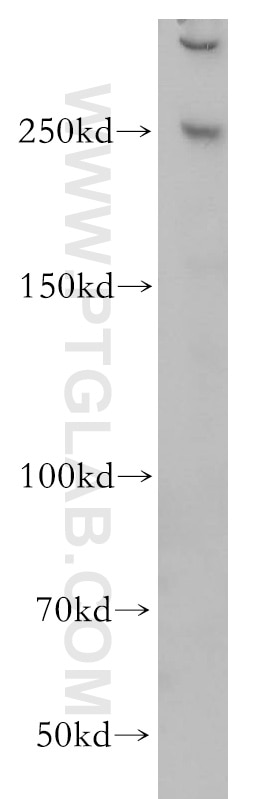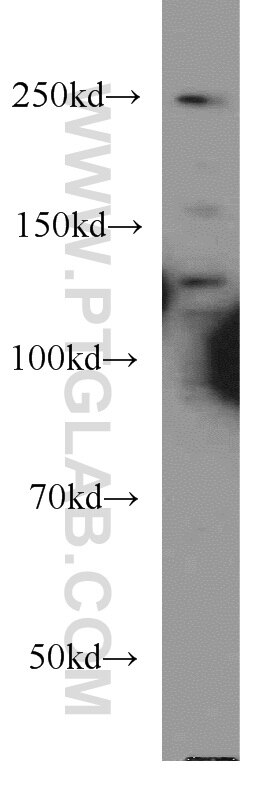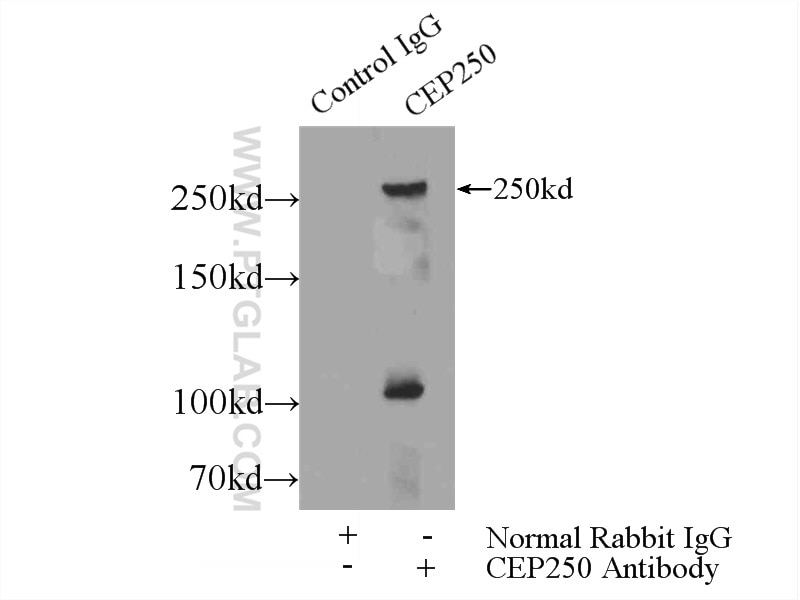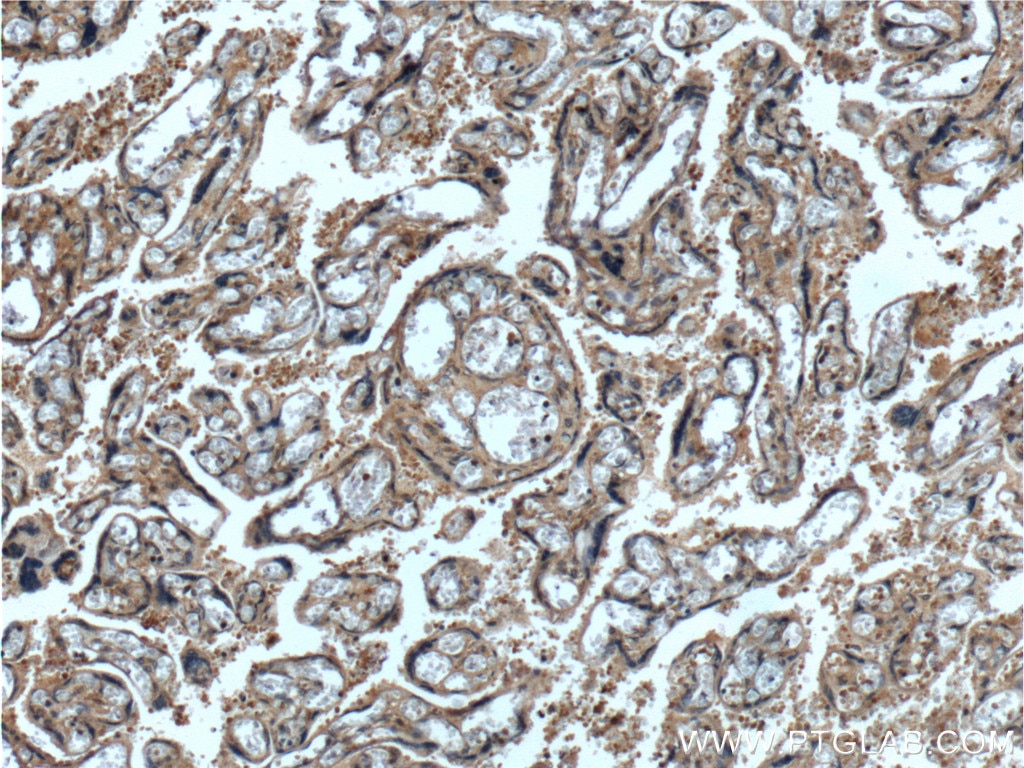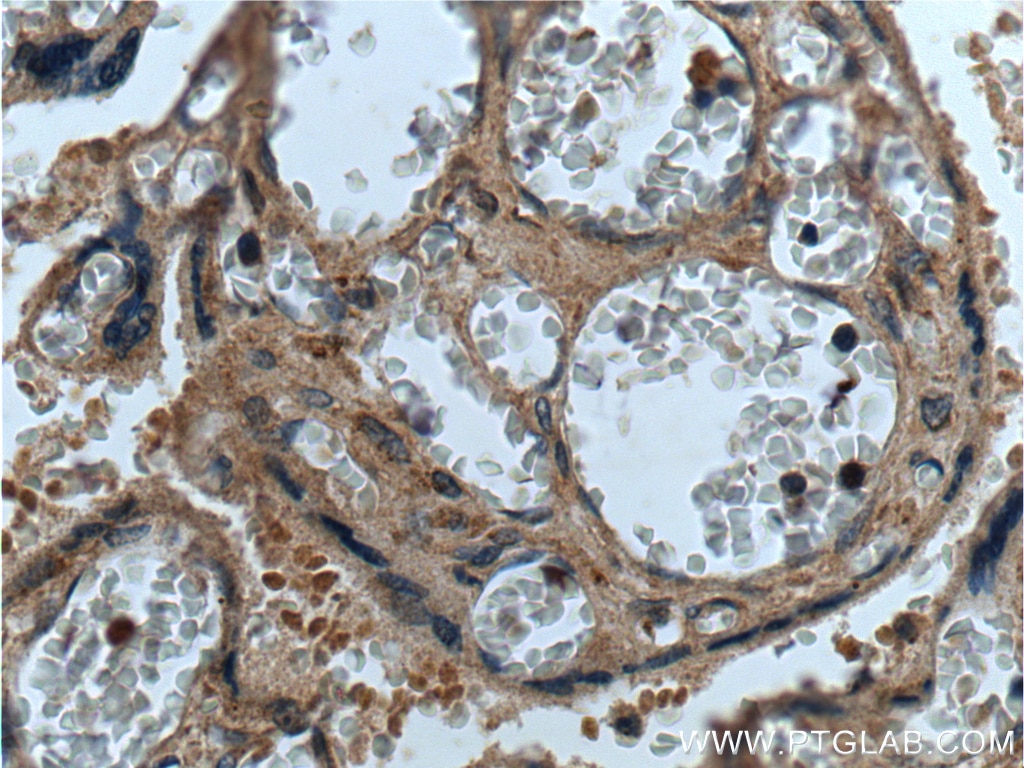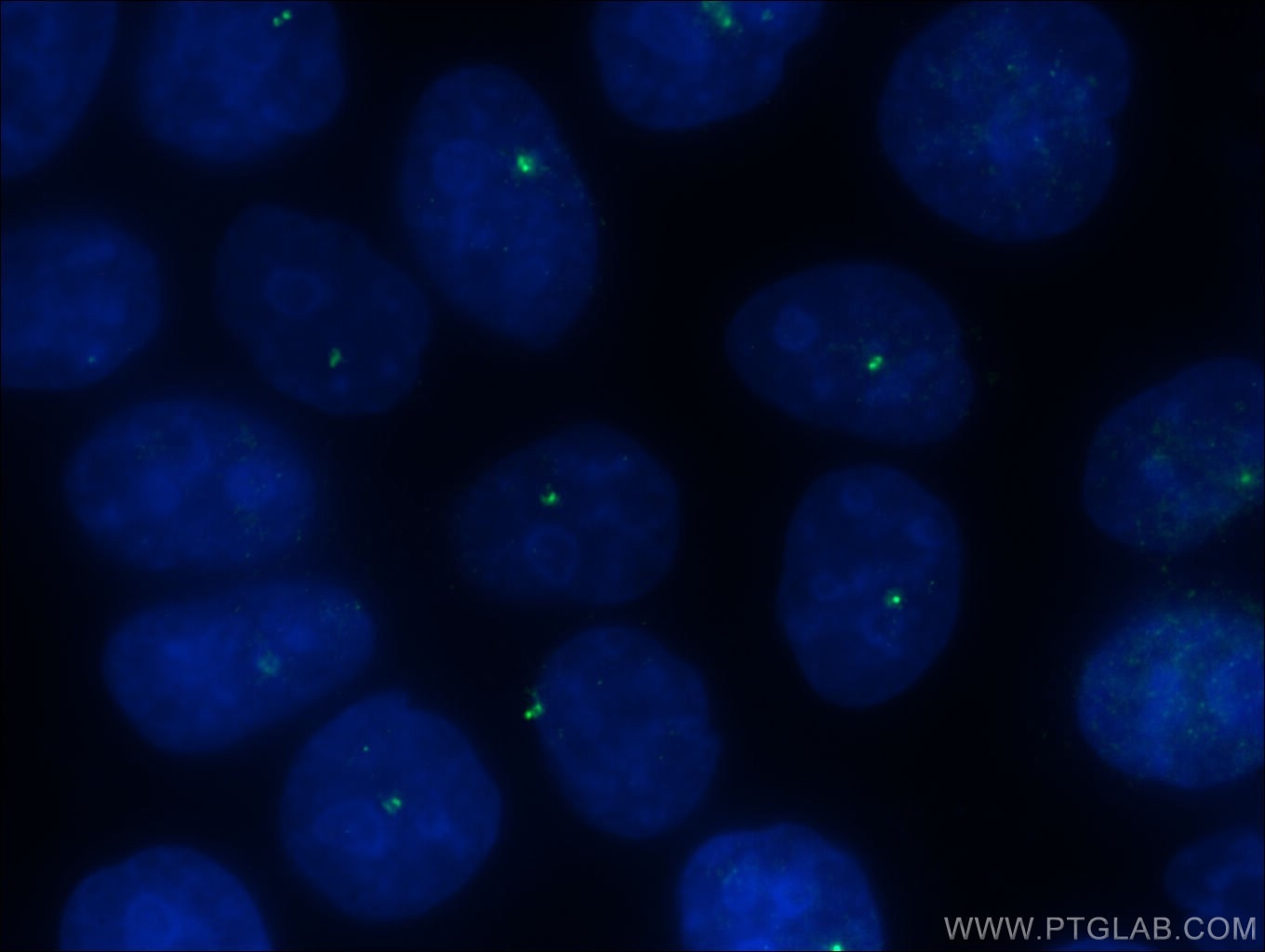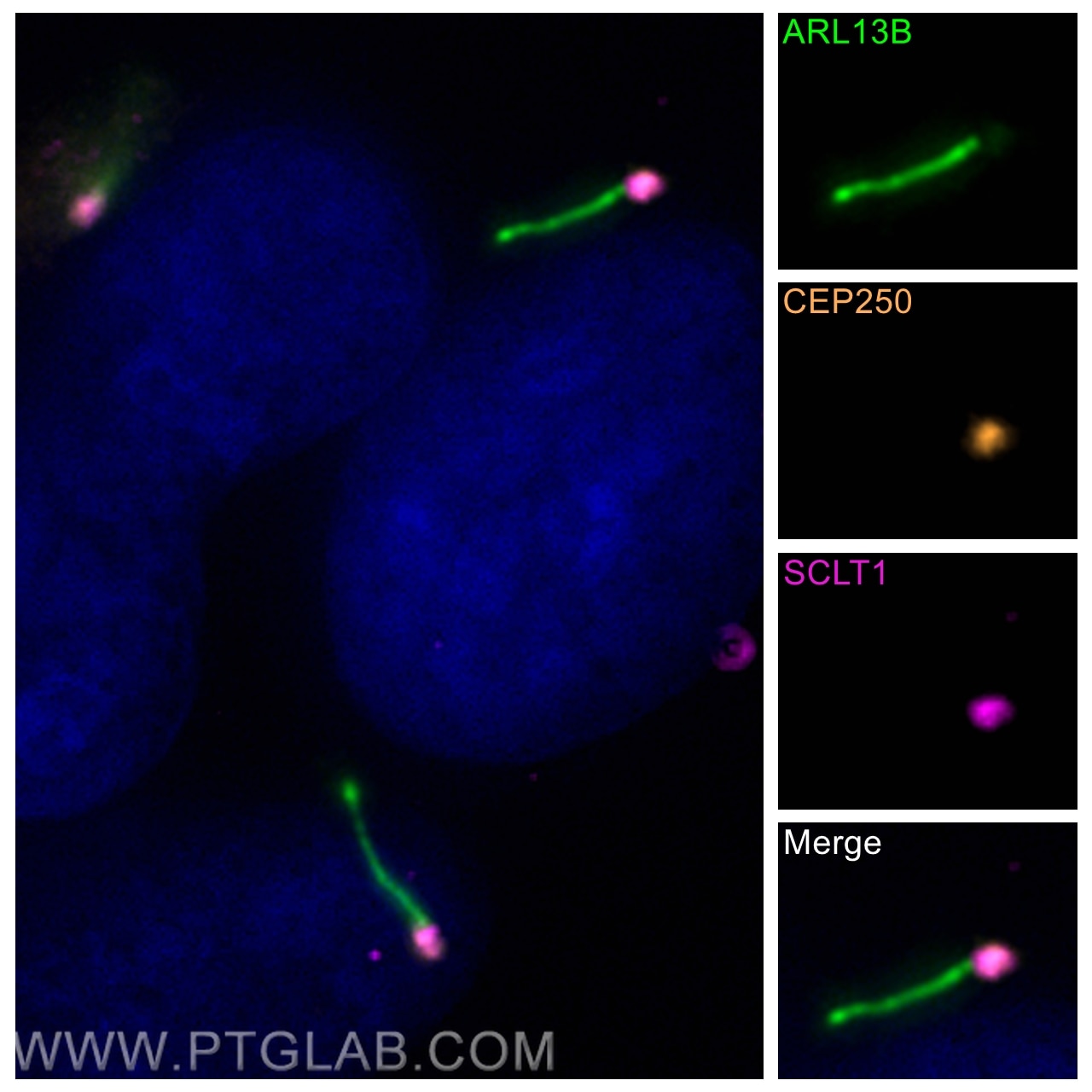Validation Data Gallery
Tested Applications
| Positive WB detected in | HeLa cells |
| Positive IP detected in | HeLa cells |
| Positive IHC detected in | human placenta tissue Note: suggested antigen retrieval with TE buffer pH 9.0; (*) Alternatively, antigen retrieval may be performed with citrate buffer pH 6.0 |
| Positive IF/ICC detected in | hTERT-RPE1 cells, HeLa cells |
Recommended dilution
| Application | Dilution |
|---|---|
| Western Blot (WB) | WB : 1:500-1:1000 |
| Immunoprecipitation (IP) | IP : 0.5-4.0 ug for 1.0-3.0 mg of total protein lysate |
| Immunohistochemistry (IHC) | IHC : 1:50-1:500 |
| Immunofluorescence (IF)/ICC | IF/ICC : 1:50-1:500 |
| It is recommended that this reagent should be titrated in each testing system to obtain optimal results. | |
| Sample-dependent, Check data in validation data gallery. | |
Published Applications
| WB | See 5 publications below |
| IHC | See 1 publications below |
| IF | See 30 publications below |
Product Information
14498-1-AP targets CEP250/CNAP1 in WB, IHC, IF/ICC, IP, ELISA applications and shows reactivity with human samples.
| Tested Reactivity | human |
| Cited Reactivity | human, mouse |
| Host / Isotype | Rabbit / IgG |
| Class | Polyclonal |
| Type | Antibody |
| Immunogen | CEP250/CNAP1 fusion protein Ag5925 相同性解析による交差性が予測される生物種 |
| Full Name | centrosomal protein 250kDa |
| Calculated molecular weight | 281 kDa |
| Observed molecular weight | 250 kDa |
| GenBank accession number | BC001433 |
| Gene Symbol | CEP250/CNAP1 |
| Gene ID (NCBI) | 11190 |
| RRID | AB_2076918 |
| Conjugate | Unconjugated |
| Form | Liquid |
| Purification Method | Antigen affinity purification |
| UNIPROT ID | Q9BV73 |
| Storage Buffer | PBS with 0.02% sodium azide and 50% glycerol , pH 7.3 |
| Storage Conditions | Store at -20°C. Stable for one year after shipment. Aliquoting is unnecessary for -20oC storage. |
Background Information
CEP250, also known as C-Nap1, is a 250 kDa coiled-coil protein that localizes to the proximal ends of mother and daughter centrioles. It is required for centriole-centriole cohesion during interphase of the cell cycle. It dissociates from the centrosomes when parental centrioles separate at the beginning of mitosis. The protein associates with and is phosphorylated by NIMA-related kinase 2, which is also associated with the centrosome.
Protocols
| Product Specific Protocols | |
|---|---|
| WB protocol for CEP250/CNAP1 antibody 14498-1-AP | Download protocol |
| IHC protocol for CEP250/CNAP1 antibody 14498-1-AP | Download protocol |
| IF protocol for CEP250/CNAP1 antibody 14498-1-AP | Download protocol |
| IP protocol for CEP250/CNAP1 antibody 14498-1-AP | Download protocol |
| Standard Protocols | |
|---|---|
| Click here to view our Standard Protocols |
Publications
| Species | Application | Title |
|---|---|---|
Science A liquid-like spindle domain promotes acentrosomal spindle assembly in mammalian oocytes. | ||
Nat Commun Microtubule asters anchored by FSD1 control axoneme assembly and ciliogenesis. | ||
Nat Commun Cytoplasmic E2f4 forms organizing centres for initiation of centriole amplification during multiciliogenesis. | ||
PLoS Biol Stable centrosomal roots disentangle to allow interphase centriole independence. | ||
Proc Natl Acad Sci U S A Dishevelled is a NEK2 kinase substrate controlling dynamics of centrosomal linker proteins. | ||
J Cell Biol Uncoordinated centrosome cycle underlies the instability of non-diploid somatic cells in mammals. |
